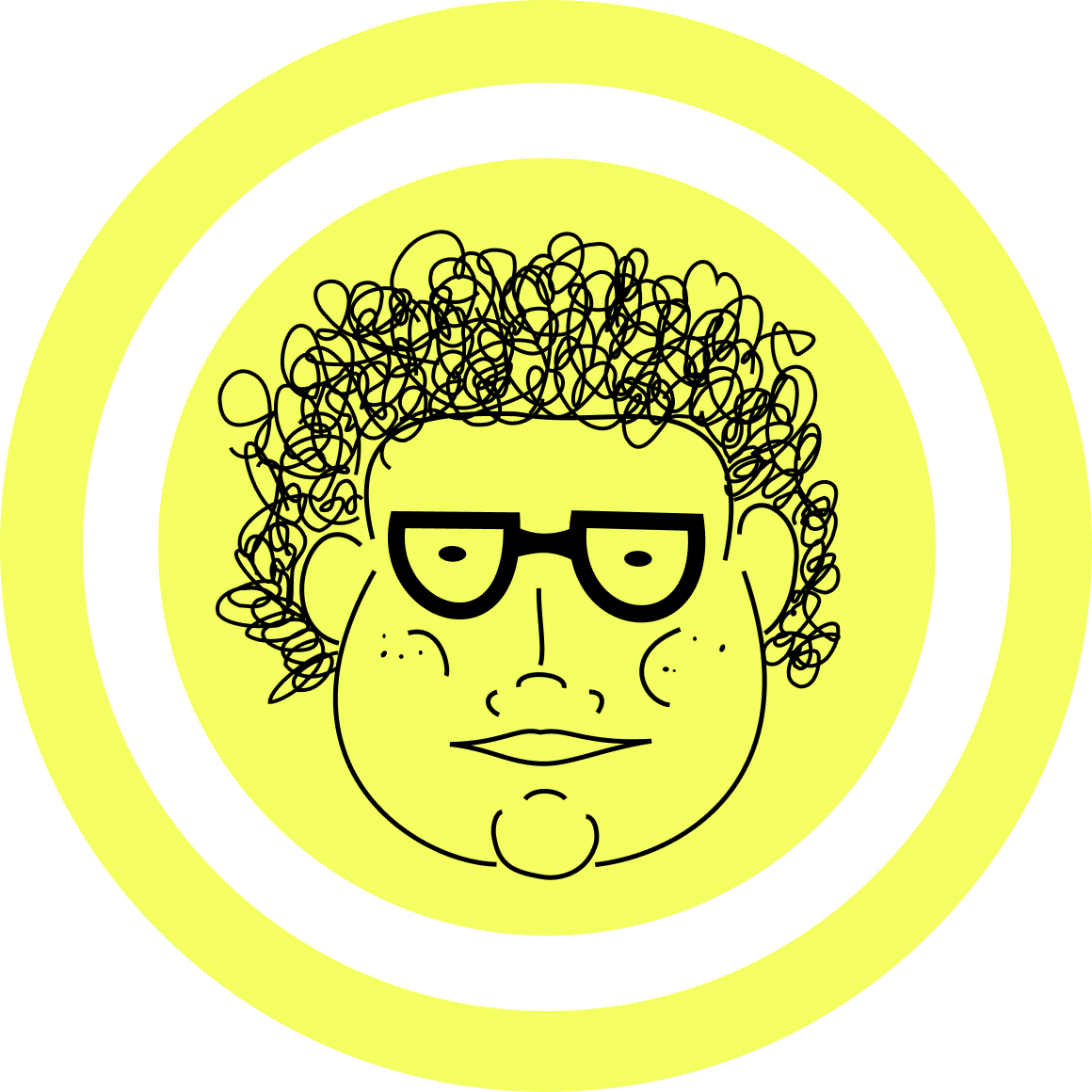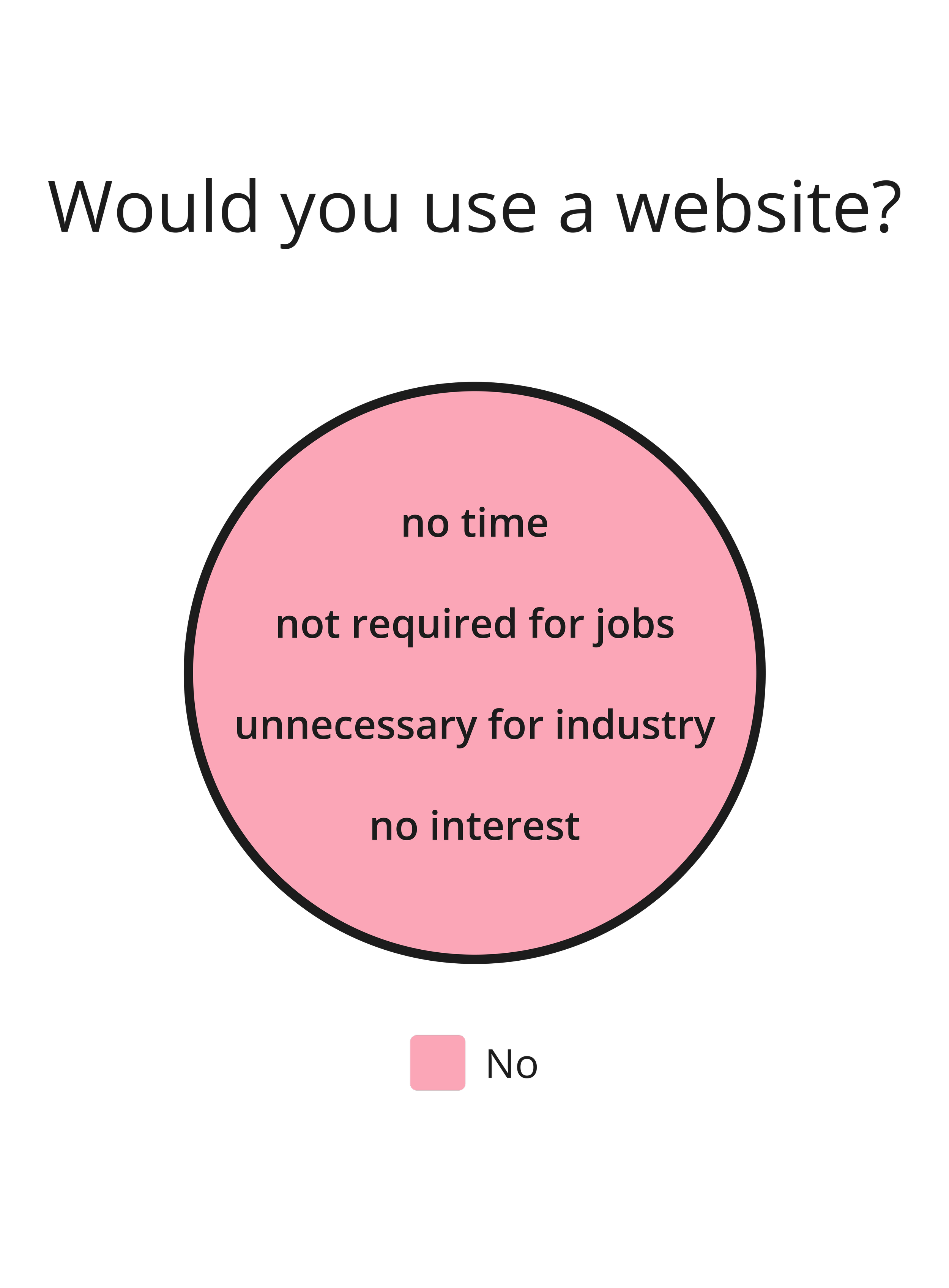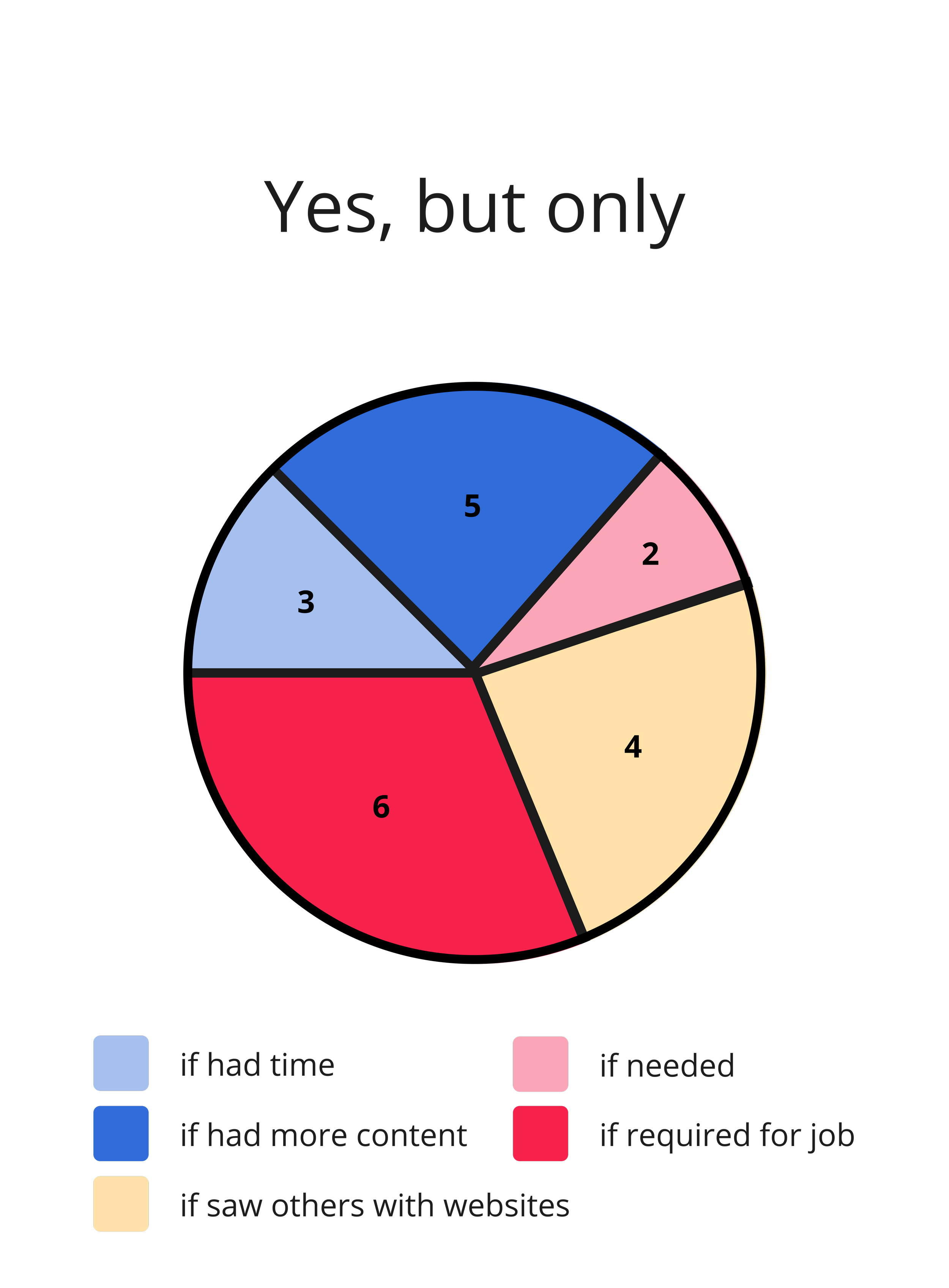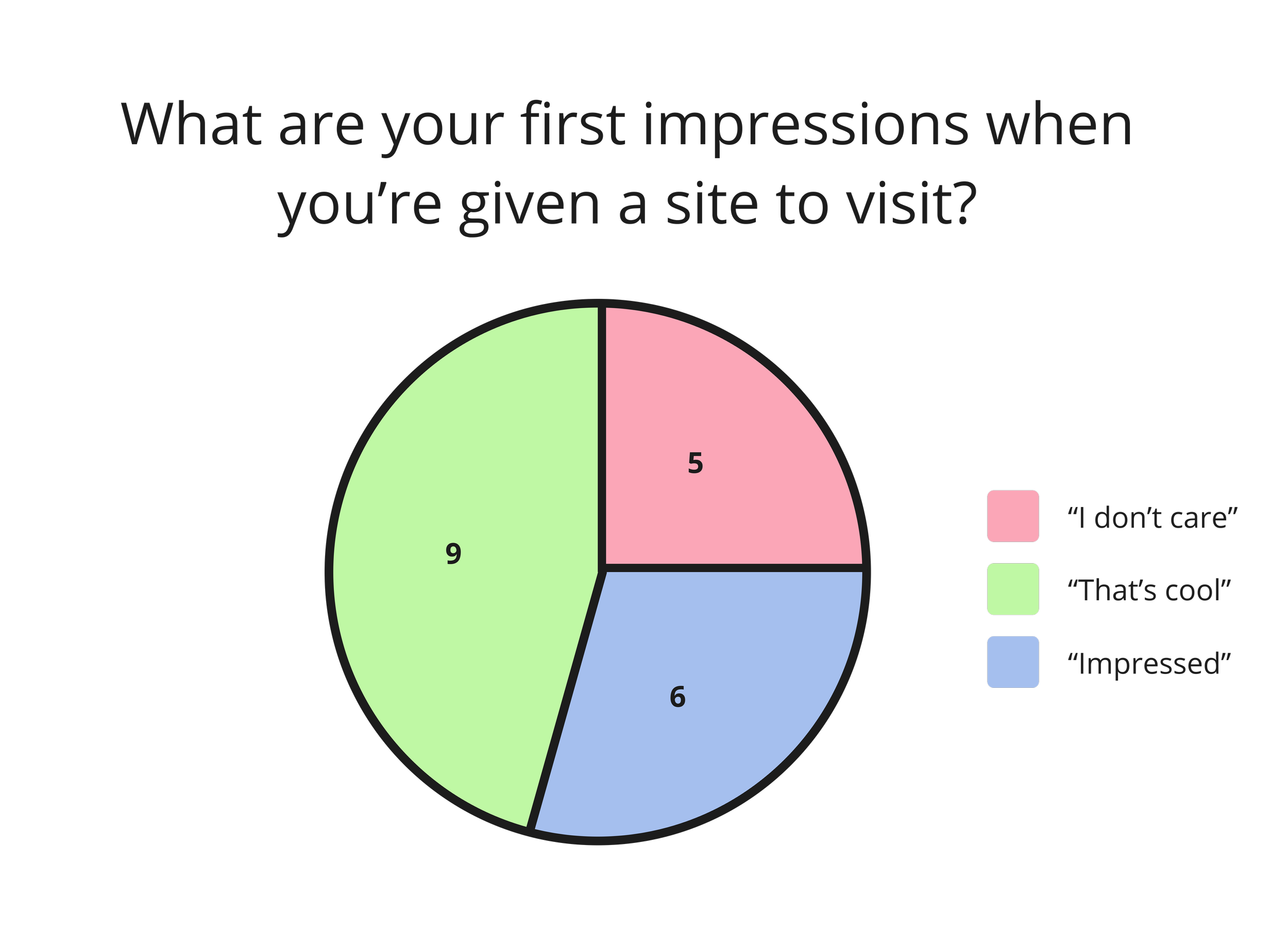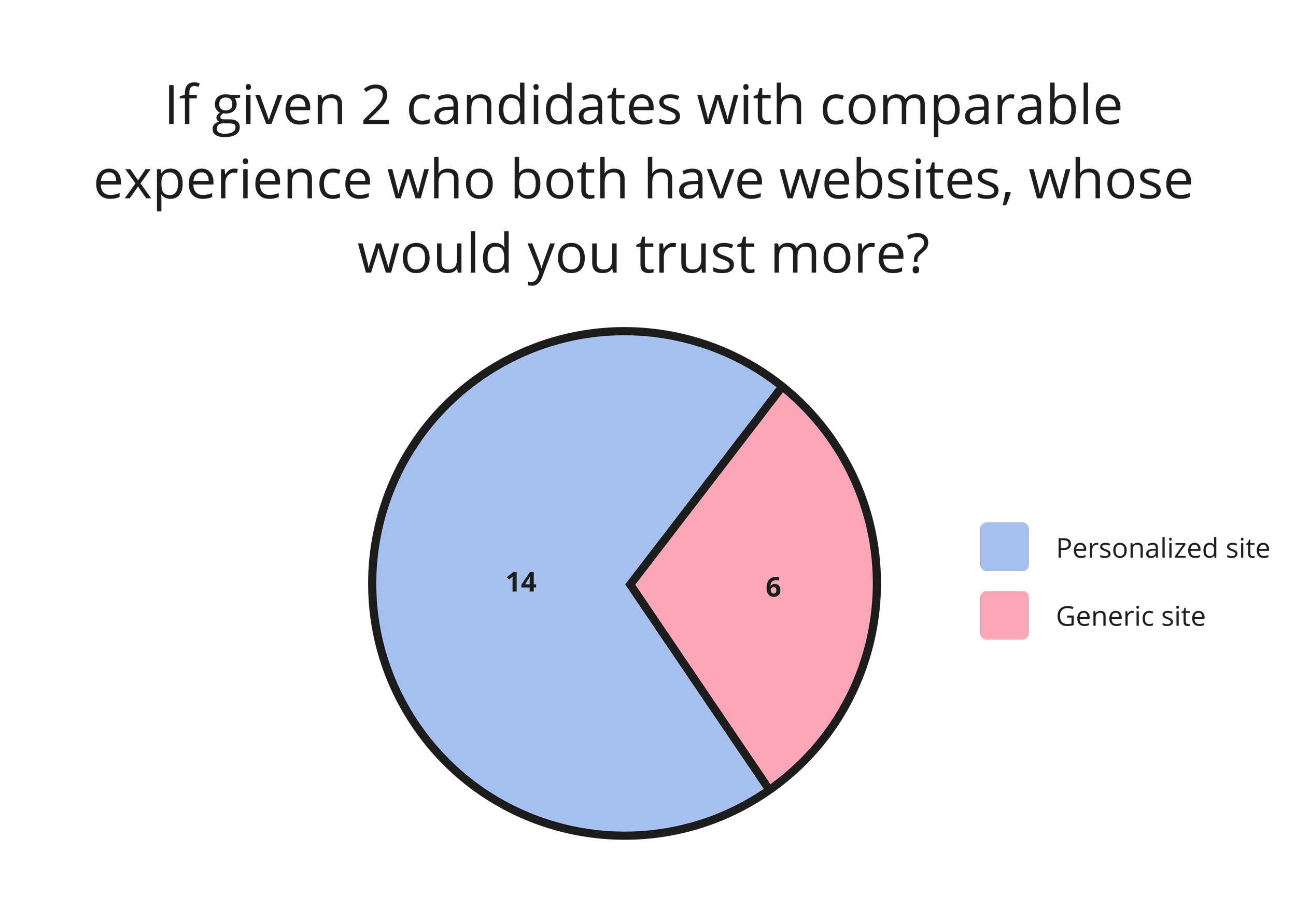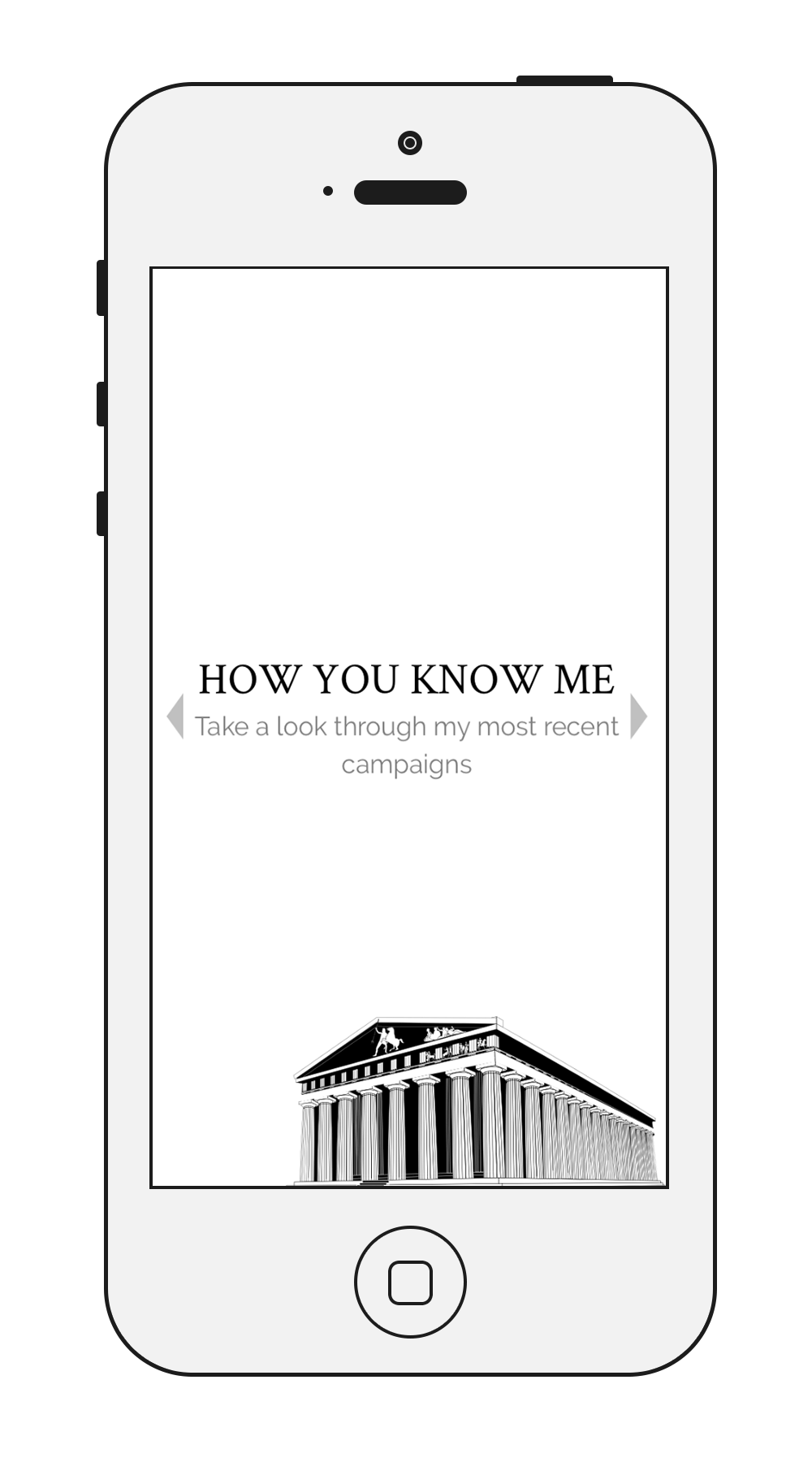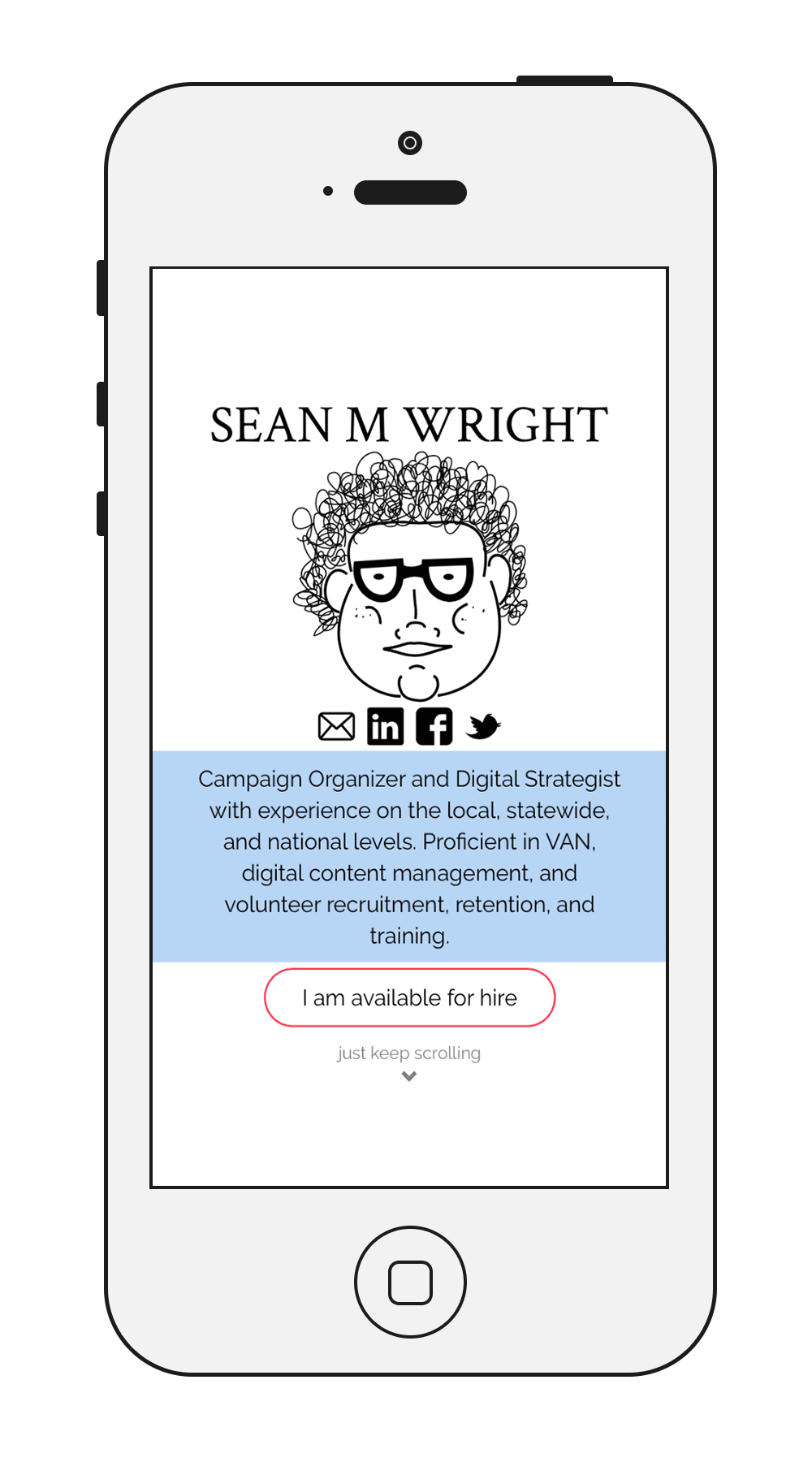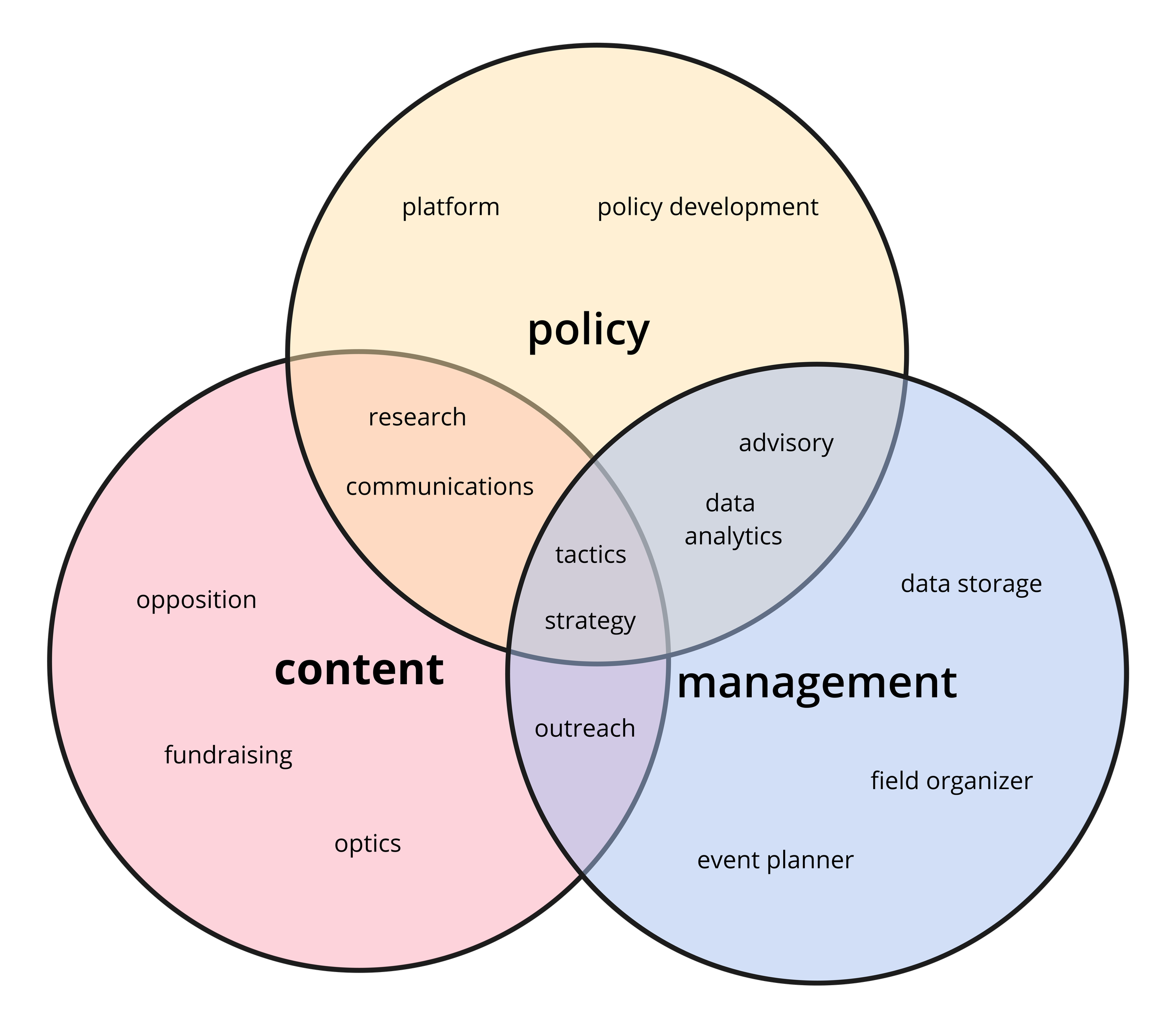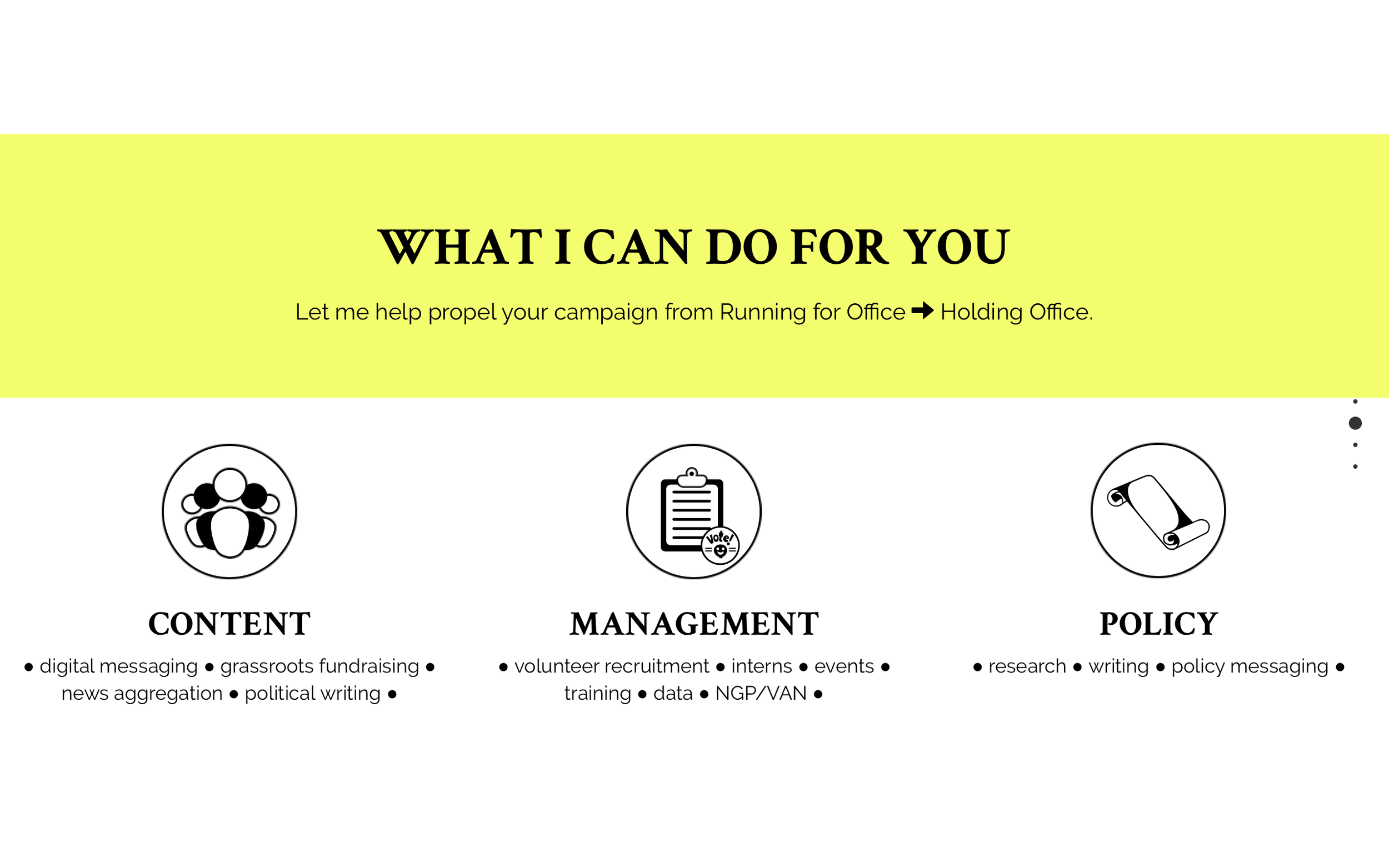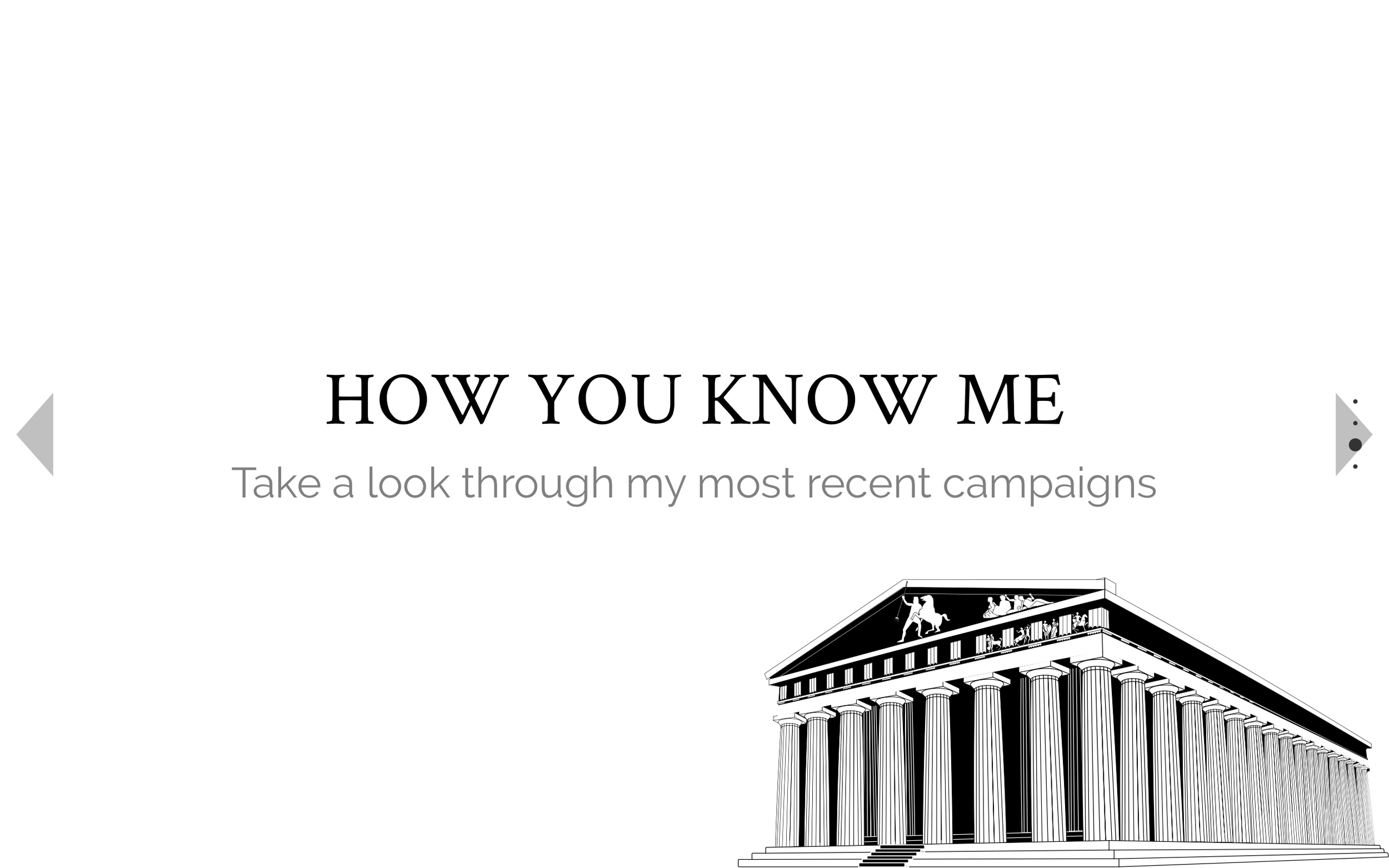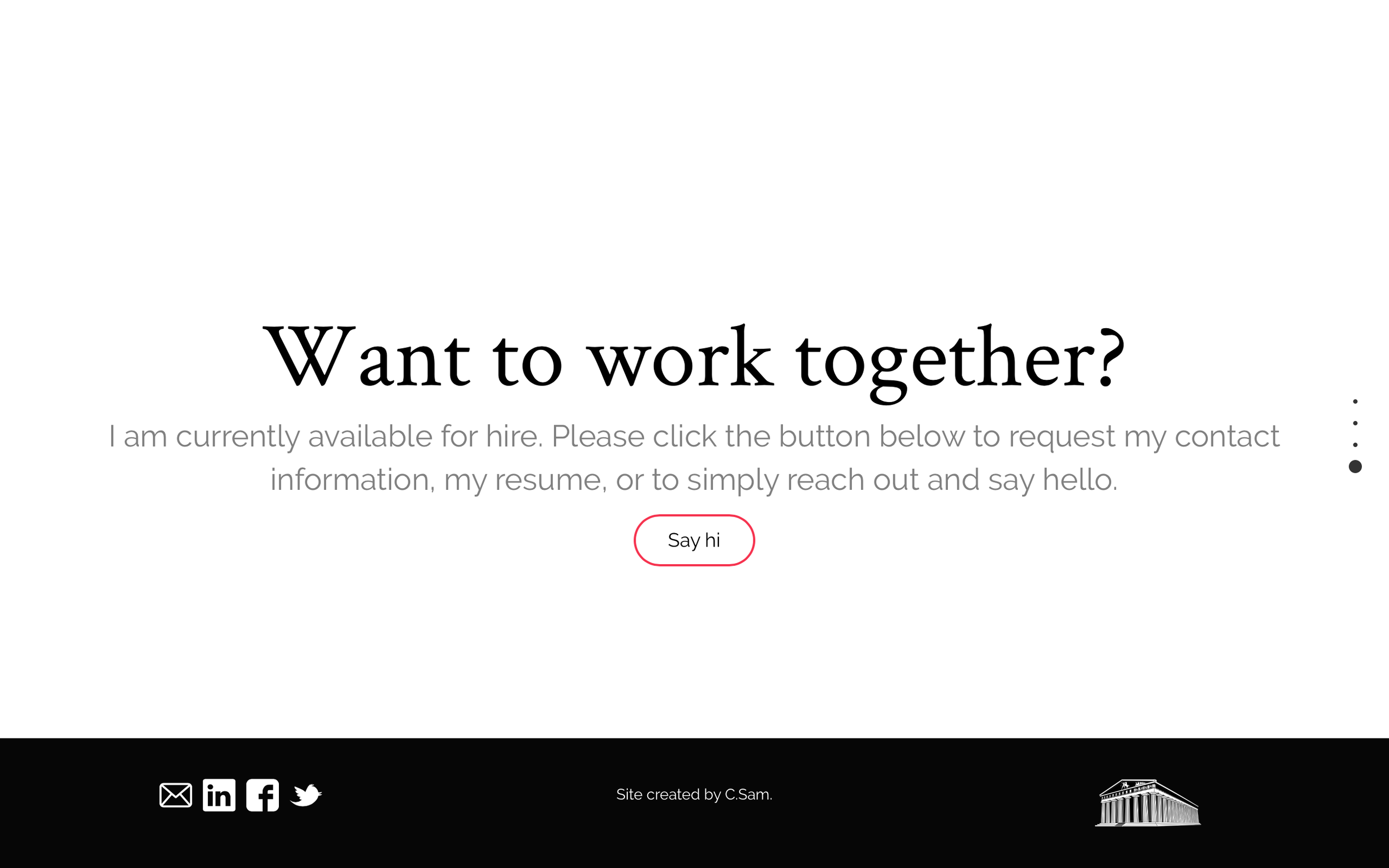Promotional Site Concept
Creating new website in its entirety within a 7-day sprint. Includes researching and developing new concept, creating brand, and client collaboration.
The Ask
Within a week's time, create a brand and promotional site that remains accessible and optimized across all varieties of screens.
My Role
Create brand
Design content and experience
Develop and launch site
Approach
Because the industry does not lean on promotional sites for work, the initial challenge was deciding the design direction. There were few examples to look towards or show client. I knew I needed to do more research and interview political consultants and operatives to learn how best to organize and design this promotional site.
I decided to narrow the scope to:
seeking work
on a campaign
After setting the focus and a few phone calls & email exchanges with the client, the vision came together quite fast.
Research
For the client’s peers and colleagues, the practice of referring to a website for professional dealings (other than LinkedIn) was not a habit. In total, I interviewed 20 people to ask about their habits and preferences, investigate their motives, and understand their perceptions.
I began inquiring about the process most commonly used when hiring for positions. It’s not surprising that word-of-mouth dominates established habits or that there is a strong dependency on utilizing social media. I learned from these interviews that the primary driver for the media differ. Hiring managers are looking for connection to relate to potential hires. Interestingly, I found there exists an effort against publicly listing job postings.
Naturally, the next step was to get a gauge on the experience the individuals I was speaking with had with political consultant sites.
That then begged the question: would you, this group of people, generally not used to seeing or referring to websites, use them if they were available? The answer was a clear "no" across the board, but I wanted to know why. What is keeping you from creating or using a professional website?
This lent to isolating the barriers. 15% reported they're not opposed to having a site: they just don't have the time to sort one out and launch it. 25% reported they lacked the impetus because they don't have enough experience, photos, or stories to fill a site. On the other side of responses, 30% indicated they would only have a site if it would get them the job, while 10% would if they felt if it would help them land the job. The final 20% would be more inclined to launch a site if they saw others doing so, if there was more use. This is key.
Looking at this data, it was clear to me the potential that existed.
There wasn't any strong opposition to having a website, but the data could be split to 40% enrolling if needed a site to land a job. The other 40% create a site if they had the luxury of time, if they could make a site. That leads 20% as the potential. If more were using sites and saw value, would we see an emergence of personal portfolio sites for political consultants?
The next step for me was to explore what habits existed for those who were hiring or recruiting. For those asked if when hiring and are shown or sent a website, I found 50% don't value the websites at the present, 20% do find or see value, and the remaining 30% see some. This indicates that there is a clear 50/50 split between people who see no value and those who see at least some value.
Let's investigate more of their preferences.
Facebook is a known supplement and intermediary for communication in the field. Here 45% reported that yes, they would still look at Facebook if provided or discovered a site, with 55% saying no. A common remark was that they would look in this hypothetical because they want to see who they know or what they say.
I prodded further, asking if they preferred a mutual connection when hiring. 60% said yes, they prefer. Asked if it influences the decision to hire, 55% said yes, 30% some, 15% no.
It looks like a connection - mutual is preferred - is susceptible to up to 85% of direct influence over the question to hire.
Websites weren't shown to disrupt their habits. 70% would still reference LinkedIn in addition to a provided or discovered consulting site, with a marginal 30% reporting they wouldn't. One explained their no vote as a look at legitimacy: since hiring tends to go fast, sometimes the level of effort and seriousness of a candidate is held in higher regard. They said if they had a website to go to - especially while many lack these by comparison - that not only does it show the candidate has experience and a seriousness (they note this is assuming the website was of quality content), it would be redundant to cross-reference on LinkedIn, when it's assumed to be all on the site with much greater detail and interactivity.
At this point, the interviewees were being a little more candid, so I pushed to see what else I could learn about their perceptions of candidates who used personal portfolio sites when applying.
What would they think about a site if they were provided one or discovered one when researching or recruiting candidates for the job?
It's generally pretty positive. Only 25% had an indifferent response, while 45% think favorably, and 30% reported they would be impressed. This perception of the applicant contrasts the value previously reported when asked generally if they valued websites.
“It’s not often I come across one, so if [the candidate presents] me [one], then I’m going to take notice. That’s an extra level of credibility and care. It is impressive.”
I needed clarity on the impact of using personal portfolio sites. Previous questions were hypotheticals referring to their thoughts surrounding the uses or potential uses of sites, but I needed to ground these hypotheticals. If you are provided sites for two candidates who are otherwise the same on paper with experience, which candidate would you trust more based on their site's content?
It's a bit of a leading question, admittedly. The results, predictably, favor a more personalized site, earning 70% of the interviewees trust over a generic.
“We spend a lot of time together. I want to see someone’s effort. If I have one with and one without, I’m going to lean to the one with effort.” Another person shared that “both show me their personalities. I would trust the one who shows me theirs more than I would a robot’s.”
Among those that wouldn't trust it more, they remained indifferent to opposed. "I don't want someone flashy on my campaign." "Usually those who talk the most are the ones who do the least work." "I don't care if it's generic. I see there's a site. That's effort enough.”
Findings
There were 2 big takeaways from the interviews:
People need to see a connection
The lack of website usage by peers and industry requirements holds for potential
From the interviews, I learned that because the hiring moves pretty quickly in an industry that is most often based geographically and relies on the ability to quickly scale contractors, those sussing candidates are looking for identifiable previous work, campaign/team fit, and potential risk of problematic behaviors.
“I’ve been on campaigns before where we got burned because we didn’t look into their social media. For one, we put college interns in charge of our social media pages. They were nice and interviewed well. We didn’t look at their personal accounts. We were eventually burned because when they started sharing our posts on their pages with their personal commentary, people got back to us about [associating] with them. Basically they just showed a lot of the more hateful things they said about incidents, so because they were not working for [our campaign], it was believed [our candidate] stood behind their [ignorant] personal posts. It was a nightmare. [...] It took away from our work, and it was a while before we replaced [them].”
Overall, these websites need to show work, but if they are to differentiate from LinkedIn, they must carefully express a personality. The site must showcase the candidate better than LinkedIn's approach (2024 Note: this predates the now common practice of using the social feed to build a narrative and sense of personality or character). Not only interactive and dynamic, the site must be transparent. If it's to be a one-stop-shop, it must readily deliver social media.
Conclusively, political consultants must differentiate themselves in their website by scaling the level of warmth needed to meet expectations of a connection to not only the job position, but to the resident team or geographic limitations of the understood culturality.
In addition to that precision of interfacing, they must provide relevant experiences presented dynamically to eliminate thought of any other candidate filling the position over them.
Personas
I developed some hypothetical user personas based on those I interviewed, their expressed needs, frustrations, and characters. The three I am using to create a model represent the best use cases for a promotional site.
-
We have the bright, but over-worked political consultant, Andy, who has a number of people he's consulting. His current goal is to find highly qualified operatives to fill out the kitchen cabinet to help develop and launch a campaign for one of his clients. At this level, it's competitive, so he has to look at many resumes. He has developed a keen eye of reading between the lines, but with the inundation of resumes, the less forgiving he is with each passing one. If it's not organized, digestable, and not without fluff, then he's on to the next several lines in: he's exculpatory in his process.
-
We have the hard-working politico climbing the career ladder, Chelsea, who has tasks dropped in her lap. She's confident in her skills to train, but her plate is full. She has to quickly find suitable candidates, but because her pool for hires are largely inexperienced operatives, she has to translate what they describe on their resumes to what she needs specifically for her job vacancy.
-
We have a weathered politico, William, who knows better than to spend money if he can better allocate resources (or talent in this case). His problem is difficult, because he's further into the campaign cycle, and all his previous copies of resumes are misplaced. He's working off notes, and he's rushing to look through any email exchanges or LinkedIn pages to assess the team's experiences. It's chaotic and disorganized.
With these factors in mind, I was able to move on to designing the brand.
Brand
The client has a commanding physical presence. He is difficult to miss in many rooms, but the dynamic that makes him stand out the most - inevitably sealing his memory - is the juxtaposition of his physical presence with his personality, his character, and his charm. More than a big fan of the late '80s - early '90s sitcom, the Golden Girls, the show can best be used to describe a relationship with him: warm, comfortable, familial.
To know the client, is to know his heart and his breadth of efficacy. After researching political consultants and industry standards, it was discovered that there wasn't much precedent for brands. Consultants in other industries lean towards a brand more associated with type than imagery.
Tennessee politics - and by extension, Southeast politics - is a pretty small population. The client's ability to strip barriers when meeting new colleagues, new candidates, or potential cohorts is strong and indubitably attached to his pre-discussed dynamism of personality & presence. This inspired me.
I reached out to the client with some of my research, and I posed the idea of stripping away formality. At 25, he is well-accomplished, but restrains from the fussiness of pomp in professional circles. I sketched out some variations of what I had in mind, and he was very pleased. Afterall, he himself is already a recognizable brand.
warm, informal, accessible
Website
In keeping with the brand and the ask, I decided that keeping everything simple with a content-lead design would be the best direction. Adding the lack of political consultant websites - and the practice using these in Tennessee - the client's purpose for the site became more promotional than actionable.
LinkedIn, word-of-mouth, and postings remained the main way he searches for or is recruited by, which opens this website up to be creative and expressive in its promotion.
Content Flow
Landing on the page should give the user immediate action, but also introduce to them the experience to expect. The landing is going to introduce the client in likeness, words, and intention. I decided on a one-page, auto-scrolling site operable by trackpads, scroll, keyboard, and touch giving a singular experience across all screens.
Single page-based content provides an intimate space with explicit focus. I kept it open by allowing more negative space, and breaking down formality through accent colors and vector imagery.
Afterall, when asked what device is most commonly used to explore resumes of candidates, the interviewees responded 40% using phone as compared to desktop (45%) and tablet (15%). When asked which device is most commonly used to give a second look at the same candidate, the phone usage rose to 90%.
Website wireflowA political career is often unforgiving. I learned from my client and those I interviewed that despite any educational background, the start is almost always the same: volunteering. If you're good enough or are lucky enough with a scaling, successful campaign, you begin doing more dedicated work. If money or scale is available, you go from volunteer to paid campaign worker. Next cycle, you will be recruited or recommended to campaigns. Eventually, you'll be a part of the "kitchen cabinet," that is, be an originating member of a forming campaign. It's a long, not always direct journey.
My client is exceptionally smart, has a brilliant aptitude, and contains the work ethic to follow anything through, and because of this, he's held many hats while developing his skillset. How do we approach this? How do we consolidate the quiver of skills he's developed building a career?
Asset: Tennessee FlagWith my research, I discovered there wasn't exactly a model or precedent for how to organize this information. Through the interviews, I learned that content needs to be digestible, concise, and easy to locate. This opened up creative liberty in my decision to approach this task.
Redundancy is the kiss of death. LinkedIn and his resume will use the language for his duties. I needed to present this same information, but sell it. I broke down his skillset into 3 categories: content, management, and policy.
The Venn Diagram shows common terms used to describe duties on campaign, but organized by the categories I chose. I focused on the three categories because they seemed to most concisely and neatly organize his skillset without repeating information.
Built using following technologies:
AngularJS
ExpressJS
jQuery
NodeJS
Bootstrap
Fullpage.js
Amazon Web Services
Visual Studio Code
Figma
From a blueprint of hire-ability, the site transitions into resume: should you choose to explore. Speaking with the client, I decided to lean towards a confident direction, inviting visitors to explore his range while also acknowledging the people connection that is omnipresent in the industry. "How you know," because chances are, visitors to the site were sent there from a colleague who recommended the client from one of available resume experiences displayed.
I requested the client's resume, and I asked him to expound on the work experiences he wanted displayed. I explained that since the information will be summarized on LinkedIn and that - outside the research and built experience of the site - any visitor here will be choosing to read his information: not forced. This should ease concerns and be an invitation to share more detail. He agreed, and he excitedly passed along the material. He opted against a more full and downloadable resume.
Because the goal of the site is to present digestible information, I decided it best to treat the single-page build as cards for the resume portion.
The visitors are choosing to read the information, but that doesn't mean they want to spend all of their time doing so. Large header announcing the experience, followed by his title and tenure. A vector, labeled and captioned state is included to bring a level of interactivity and energy to the reading experience.
No matter the action - scroll, drag, key - the resume cards can be explored horizontally. At any time, the visitor can move vertically to view the previous page listing skills or to the next page. Moving vertically does not interfere with the resume cards; they will remain where last viewed, and they will not reset.
Whenever the user makes the decision to control flowing through the site, they will be directed to a question, "Want to work together?" The client wanted the site to be brief without a lot of filler, and the research tends to coincide with that appeal. The site finishes with a prompt for visitors to take action with the button provided to reach out to him. The story of who Sean Wright is ends concisely with the potential of new chapters open.
What’s Next
The client loved the website. He immediately shared it across his platforms, as well as linking it in his social media biographies. I asked him what those in his circle thought of it.
“[My friends and old colleagues] love it! They [hadn’t] thought about promoting themselves, so it was cool to see them so surprised and intrigued. Some told me they wish they had one to send of themselves for jobs, so I feel like a bit of a trendsetter.”
Obviously pleased, but he highlights an important idea within this experiment: is it possible to make a model for creating political consultant portfolios? Continuing this, the next steps would be to test the site. With the sprint challenge, the bulk of testing was interviewing potential users, which then moved into prototyping and publishing. Any further testing was in idea, but not with product. I would like to see this model created here tested with visitors. It has potential, but this was too finite of an idea since it was shaped around the client personally.
Testing, testing, prototyping, and more testing. When a model has been reached, it would be a dream to have real-life results on hire-ability of a candidate's presenting of a portfolio. To ask those who have hired questions surmising the impact of the inclusion - and ultimately aesthetic - of a portfolio with their application.
For now, the client is happy, and I am happy.

